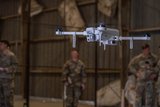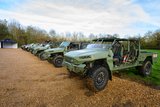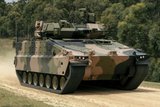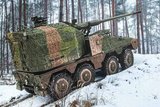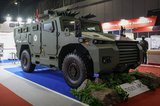Russian MoD receives mine clearance UGV
766 UPTK concern developed the Uran-6 on the basis of the Croatian DOK-ING MV-4 mine-clearing UGV. (Photo: Rostec State Corporation)
The Russian MoD has announced that military engineers of the Central Military District (CMD) for the first time received the robotic mine clearance UGV, Uran-6.
The Uran-6 is designed for mine clearance of terrain in urban and mountainous areas.
It can also be used to make passages in minefields and is capable of detecting and neutralising explosive objects with a capacity of no more than four kilograms of TNT equivalent.
The Uran-6 was developed in 2013 by the Russian company 766 UPTK, before undergoing testing in real-world operation conditions, including deployment in the Syrian civil war.
Russia has been heavily investing in the development of new UGVs, such as the new frontline combat UGV, the Uran-9. The Uran-6 entered into service with the Russian Armed Forces in 2019.
Russia aims to stand up its first experimental army unit equipped with combat UGVs as announced by the Chief of Staff of the Russian Ground Forces, on 9 April 2021.
According to Shephard Defence Insight, the Uran-6 is capable of carrying five interchangeable tools on its front arms, the Uran-6 can be used to neutralise all types of mines and IEDs from a distance of up to 800m.
Related Equipment in Defence Insight
More from Land Warfare
-
![Team LionStrike polishes British Army vehicle offering for Land Mobility Programme]()
Team LionStrike polishes British Army vehicle offering for Land Mobility Programme
Team LionStrike has demonstrated its offering for the British Army’s Land Mobility Programme with plans to bid the Chevrolet Silverado and two variants of the platform: the Infantry Squad Vehicle and General Support Utility Platform.
-
![South Korean companies turning necessity into export opportunity]()
South Korean companies turning necessity into export opportunity
South Korea’s particular geopolitical situation and threat environment has created a defence industry ecosystem of substantial size and breadth.
-
![“A new philosophy of defence”: ASELSAN sets out ambitions for the future]()
“A new philosophy of defence”: ASELSAN sets out ambitions for the future
In Conversation: Shephard’s Gerrard Cowan talks to ASELSAN CEO and President Ahmet Akyol about how the business has evolved and expanded over the past five decades, and its aim of becoming a top 30 global defence company by 2030.
-
![Still no clarity on the future of the British Army’s new wheeled artillery system]()
Still no clarity on the future of the British Army’s new wheeled artillery system
The UK donated its AS90 155mm/39cal tracked self-propelled howitzers to Ukraine ahead of planned retirement and bought Archer platforms to fill the gap. Eventually RCH 155s were ordered but the procurement effort remains under a cloud.
-
![More details of Indonesia’s Celeris-based 4x4 emerge as customer hunt begins]()
More details of Indonesia’s Celeris-based 4x4 emerge as customer hunt begins
The Texelis Celeris builds on the rolling chassis of the Serval 4×4 lightweight multi-role armoured vehicle which is being built by Texelis and Krauss-Maffei Wegmann Nexter Defence Systems (KNDS France).
-
![KF41 Lynx finds a path but hurdles remain]()
KF41 Lynx finds a path but hurdles remain
The Lynx is typically configured as an IFV operated by a crew of three and with space for up to eight dismounts in the rear troop compartment. The platform is being delivered to Hungary, has been contracted for Italy and will soon be in Ukrainian hands in small numbers.







